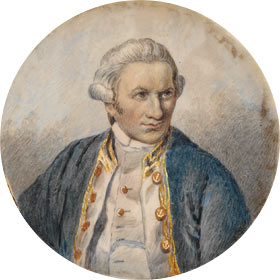Kauai is known for it’s superior climate
features. They include the composed temperatures from day to day as well as
season to season, the persistent northeasterly trade winds and the marked
variation in rainfall from the wet to the dry season and place to place.
The average temperature of Kauai’s winter
is 75 degrees, while the average is 85 during summer. The range in normal temperatures from
the coolest month, February, to the warmest month, August, is less than 8
degrees. The daily range in temperature is also small, less than a 15-degree
difference between day and night.
The trade winds blow across the island
during most of each year and the dominance of these winds has marked influence
on the climate of the area. Completely cloudless skies are quite rare. On the
average, clouds cover six tenths to seven tenths of the sky during the daylight
hours. Trade wind showers are relatively common. Although heavy at times, most
of the showers are light, at night and of short duration. The frequency and
intensity of the showers increase toward the mountains to the west. Mount
Waialeale receives 486 inches annually, the highest recorded annual average in
the world. Mount. Waialeale has recorded annual rainfalls in excess of 620
inches.

Normal annual rainfall is over 40 inches.
Three-fourths of this total, on the average, falls during the seven month wet
season, which extends from October through April. Widespread rainstorms, which
account for much of the precipitation, occur most frequently during this
period. Normal precipitation in January, the wettest month, is over 6 inches. The dry season includes the months of
May through September. June, the driest month, receives only about 1.5 inches
of rain, on average.
Hurricanes and other severe windstorms
are quite rare. Strong winds do occur at times in connection with storm systems
moving through the area, but seldom cause extensive damage. Relative humidity, moderate to high in
all seasons, is slightly higher in the wet season than in the dry. During periods when the temperature and
humidity are both high, the weather is seldom domineering. This is due to the trade winds, which
provide a system of natural ventilation during most of each year.

From sand dunes to bare desert plateaus, fertile
river valleys, foothills, tropical rainforests and awe-inspiring mountain tops,
Kauai is an exceptional geographical subject. Kauai is the oldest
island in the chain making it one of the most beautiful
and diverse of the Hawaiian Islands. Nicknamed the Garden Island for its lush
vegetation and abundant rainfall, Kauai is home to many indigenous plants and
wildlife. The island of Kauai is circular in shape and covers approximately 550
square miles. There are 69
beaches, which offers more beach per mile of coastline than the other Hawaiian
islands. The highest peak is Kawaikini Peak, with an elevation of 5,243 feet. It is located in the center of Kauai
and is surrounded by dense, swampy forests and steep cliffs.
Some of the more
spectacular physical geographical features include the Napali Coast and the
Waimea State Park. The Napali
Coast has breath taking views that include razor sharp cliffs that
rise sharply from sea to heights of 4,000 feet, enchanting hanging valleys, sea
caves, lush green valleys and cascading waterfalls that travel to the sea from
thousands of feet above. Waimea
Canyon State Park is a 1o mile stretch, a mile wide and more than 3,500 feet
deep. It contains more than 45
miles of trail and over 4,300 acres of land. With its great climate and beautiful features, Kauai is one
of the most remote places on Earth.
Kauai got it’s nickname from
it’s varieties of exotic flowers, trees, fruits and other plant life. The exotic vegetation is what attract
visitors to the island. The
official flower of Kauai is the Mokihana.
Despite it being the island flower, it is actually a green berry found
in the rainforests of Kauai. The
variations of trees on the island include the Candle Nut Tree, the Banyan Tree
and the Royal Poinciana Tree. The
Candle Nut Tree is found all over Kauai.
It grows over 100 feet tall and produce small white flowers that are
used in leis. Kauai is also home
to many fruit bearing trees such as avocados, bananas, mangos and guavas. In fact, guavas are a leading crop in
the agricultural industry. Food
plants grown commercially or in backyards for home consumption include
sugarcane, pineapples, papayas, lichee, coconuts, breadfruit, macadamia nuts,
limes, passion fruit, taros, and tamarinds. The entire island of
Kauai is a botanical garden that developed overtime by wind, animals and
people. Today, some plants have
adjusted to Kauai’s unique climate and created new plant lineages.
























